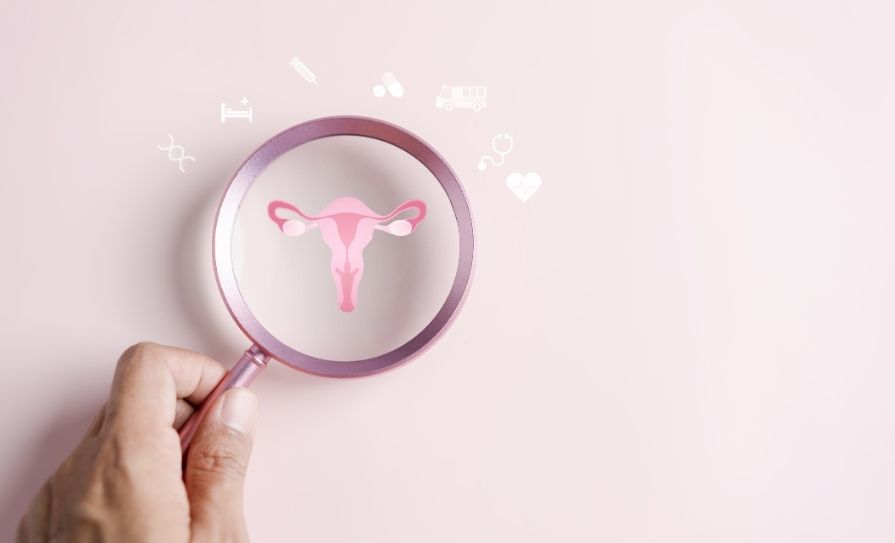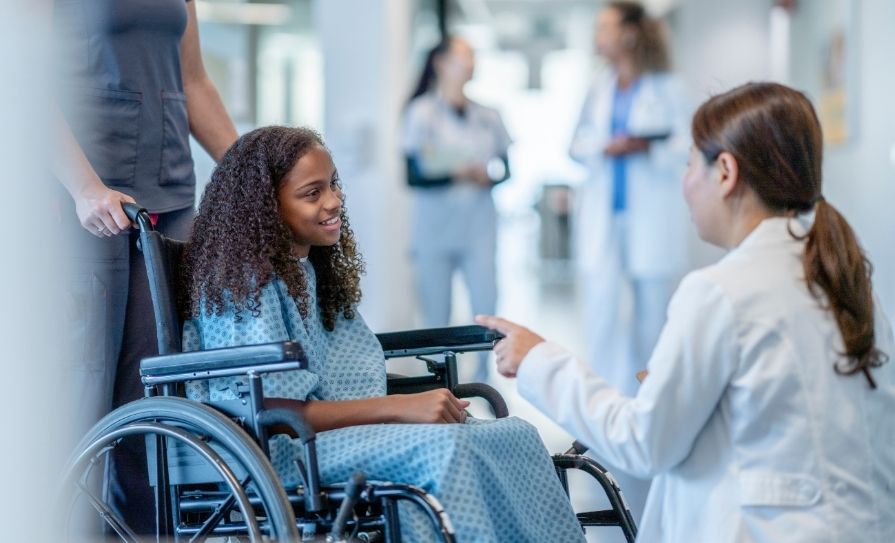This article from the International Urogynecological Association (IUGA) provides a framework for the management of women with common urogynaecological conditions during the current pandemic, which has resulted in a reduction in urogynaecological services
This document provides guidance for contingency planning for individual healthcare practitioners to mitigate the effects of reductions in human interactions and physical resources on your service, acknowledging that practices and therapies may vary in different countries. During the pandemic, we understand that doctors and allied health professionals such as physiotherapists and nurses may need to depart from their usual practice and apply their professional judgement to make the best use of the resources available to them. This guidance provides a framework for decision-making and you should continue to follow it as far as you can, using your professional judgment to apply it to the situations you face.
This is an active document (last update: 28 April, 2020) and feedback is welcomed via email to office@iuga.org. Information will be updated on a weekly basis until the end of the pandemic, depending on information available. Link to original article on IUGA website: https://www.iuga.org/publications/covid-19-guidance-for-urogynecological-conditions.
Objectives
1. To reduce the risk of person-to-person (horizontal) transmission of the virus SARS-CoV-2 in urogynaecology patients.
2. To make the best use of very limited human interactions and physical resources.
1. Urinary incontinence
1.1 Assessment
· Women with urinary incontinence should initially be managed by remote communication (virtual consultation).
· Facilities for remote communication can vary and include telephone/video conferencing.
· If possible, it may be useful to obtain the history prior to the hospital visit using a structured general history questionnaire with validated, condition-specific questionnaires returned via secure email access or electronic personal assessment questionnaires, such as EPAQ-Pelvic Floor. Non-computer-literate patients can be asked questions over the phone or sent the documents in the post with a return addressed stamped envelope.
· A bladder diary could be sent to the patient before consultation.
· A relevant clinical history should be taken to elucidate the type and severity of the symptoms. Categorise the woman’s urinary incontinence as stress urinary incontinence, mixed urinary incontinence, or urgency urinary incontinence/overactive bladder. Start initial treatment on this basis. In mixed urinary incontinence, direct treatment towards the predominant symptom.
· Exclude symptoms of urinary tract infection (UTI) (if suspected, follow UTI guidance below).
· Women should be referred to secondary care for further management in the presence of:
▸ Visible haematuria.
▸ Persistent bladder or urethral pain.
▸ Suspected fistula.
▸ Previous continence surgery with pain and/or recurrent UTI.
▸ Urinary retention/ voiding difficulty.
· Explain that in keeping with current practice, conservative management will be offered first.
· Further investigations and surgical management will take place after services return to normal.
• Maintain an electronic/paper copy of the remote assessment for future reference.
1.2. Non-surgical management of urinary incontinence
1.2.1 Lifestyle interventions
· Recommend a trial of caffeine reduction to women with overactive bladder.
· Consider advising women with urinary incontinence or overactive bladder and a high or low fluid intake to modify their fluid intake.
· Advise women with urinary incontinence or overactive bladder who have a BMI greater than 30 to lose weight.
· Try and limit calorie intake and take daily exercise during the Covid-19 lockdown.
1.2.2 Physical therapy
· Perform a physiotherapy assessment to find out whether and to what extent physiotherapy is feasible.
· Pelvic floor muscle training of at least three months’ duration should be offered as first-line treatment to women with stress or mixed urinary incontinence.
· In the current climate where face-to-face consultations are not possible, other possibilities need to be considered:
▸ Telephone consultation.
▸ Video consultation.
▸ Use of specific apps, ie, Squeezy app.
· Remote telephone follow-up is recommended on a monthly basis. Validated questionnaires and bladder diary may be used.
1.2.3 Behavioural therapies
· Offer bladder training lasting for a minimum of six weeks as first-line treatment to women with urgency or mixed urinary incontinence.
· In the current climate where face-to-face consultations are not possible, other possibilities need to be considered:
▸ Telephone consultation.
▸ Video consultation.
▸ Use of specific apps, ie, Squeezy app, iPelvis.
▸ Instructional videos.
· Remote telephone follow-up is recommended on a monthly basis. Validated questionnaires and bladder diary may be used.
· If women do not achieve satisfactory benefit from bladder training and pelvic floor programmes, the combination of an overactive bladder medicine with bladder training should be considered.
1.2.4 Medicines for overactive bladder
· Before starting treatment with a medicine for overactive bladder, explain to the woman:
▸ The likelihood of the medicine being successful.
▸ The common adverse effects associated with the medicine.
▸ That some adverse effects of anticholinergic medicines, such as dry mouth and constipation, may indicate that the medicine is starting to have an effect.
▸ That she may not see substantial benefits until she has been taking the medicine for at least four weeks and that her symptoms may continue to improve over time.
▸ That the long-term effects of anticholinergic medicines for overactive bladder on cognitive function are uncertain.
· When offering anticholinergic medicines to treat overactive bladder, take account of the woman’s:
▸ Coexisting conditions (such as poor bladder-emptying, cognitive impairment or dementia).
▸ Current use of other medicines that affect total anticholinergic load.
▸ Risk of adverse effects, including cognitive impairment.
· The choice of medication depends on availability of medications in your setting.
· Offer intravaginal oestrogens to treat overactive bladder symptoms in postmenopausal women with vaginal atrophy.
· Offer remote/virtual consultation four weeks after starting a new medicine for overactive bladder. Ask the woman if she is satisfied with the treatment and:
▸ If improvement is optimal, continue treatment.
▸ If there is no or suboptimal improvement, or intolerable adverse effects, change the dose or try an alternative medicine for overactive bladder.
▸ Offer a review before four weeks if the adverse events of a medicine for overactive bladder are intolerable.
· Offer a further virtual review if a medicine for overactive bladder or urinary incontinence stops working after an initial successful four-week review.
· Offer a review to women who remain on long-term medicine for overactive bladder or urinary incontinence every 12 months, or every six months if they are aged over 75; this can be accomplished with telemedicine.
· Refer women who have tried taking medicine for overactive bladder, but for whom it has not been successful or tolerated, to secondary care to consider further treatment. Explain that this may be delayed.
· If the need arises to visit the hospital for respiratory symptoms suggestive of the viral illness, carry a copy of the prescription, as antimuscarinic medications, particularly solifenacin, have a side-effect of prolongation of QT syndrome on electrocardiogram that may be detrimental with concurrent use of medications used for potential treatment of the current viral illness.
1.2.5 Absorbent containment products, urinals and toileting aids
· Many women use containment products and toileting aids as a coping/management strategy for bladder and bowel symptoms. There are many different products available and women can be advised to visit the continence product advisor website for information and an online assessment about aids and devices that may be helpful to manage their symptoms whilst awaiting further review — www.continenceproductadvisor.org.
· Consider incontinence pessaries or over-the-counter devices to control stress urinary incontinence with exercise.
· For those who are self-shielding or unable to get to the shops to buy their normal products, most supermarket home delivery services will be able to deliver the pads with normal groceries and many of the pad companies have their own Internet or telephone store that women can call direct to purchase products that are then delivered direct to their homes. Many products are also available for home delivery through online pharmacies and retailers.
· Advice should be given on skin care and basic vulvar health and hygiene.
1.3 Follow-up
· Some women may have had surgery prior to the crisis and may have their face-to-face appointments cancelled or postponed
· Follow-up appointments can be carried out remotely using telephone or video conferencing. A randomised trial has shown that postoperative phone visits are not inferior to in-person visits in terms of patient satisfaction, complications and adverse events.
· If a reason to see patient is identified, a face-to-face appointment may be the only option. If so, recommended that PPE should be worn.
2. Anal incontinence
2.1 Assessment
· Women with anal incontinence should initially be managed by remote communication.
· Facilities for remote communication can vary — telephone/video conferencing.
· If possible, it may be useful to obtain history prior to the hospital visit using a structured general history questionnaire with validated, condition-specific questionnaires returned via secure email access or an electronic personal assessment questionnaire, such as EPAQ-Pelvic Floor. Non-computer-literate patients can be asked questions over the phone or sent the documents in the post with a return addressed stamped envelope.
· A relevant clinical history should be taken to elucidate the type and severity of the symptoms. Categorise the woman’s anal incontinence as urge anal incontinence (needs to rush to toilet and may have a bowel accident before getting there), passive anal incontinence (urgency not associated with incontinence, faecal matter just comes out), or flatus incontinence, or mixed. Start initial treatment on this basis.
· Symptom profile for anal incontinence to include:
▸ What the problem is and how bothersome.
▸ What kind of anal incontinence and when does this happen.
▸ If passive, can this be anytime or mainly post defecatory?
▸ Stool type (Bristol Stool chart).
▸ Length of time she has had the problem.
▸ Pain on defecation (possible haemorrhoids or anal fissure).
▸ Bloating.
▸ Incomplete emptying.
▸ Constipation with overflow.
· Exclude any red flag symptoms for colorectal cancer:
▸ Unexplained weight loss.
▸ Change in bowel habit in last three months for no reason.
▸ Unexplained lethargy.
▸ Passing blood with or without mucus mixed with stool.
▸ Abdominal pain.
▸ History of bowel cancer in family.
· Explain that in keeping with current practice, conservative management will be offered. Further investigations and surgical management will occur after services return to normal.
2.2 Non-surgical management of anal incontinence
2.2.1 Assessment
Often, patients who have anal incontinence have loose stools (type 5-6), so modifying food and fluid often helps to make the stool firmer and give better control, for example, they can be given advice as follows:
· Drink 1.5 litres/three pints/eight cups of varied fluids every day. Avoid drinking all types of coffee, caffeinated or decaffeinated. Avoid fizzy drinks, especially diet types.
· Reduce the fibre in diet (low-residue diet).
· Marshmallows, jelly, apple sauce, tapioca, bio-natural yoghurt and rice are all foods that may help to firm your stool.
· Trial of avoiding wheat products, especially bread, pasta, biscuits, cakes and pastry.
· Have a probiotic yoghurt drink or bio-yogurt daily.
· Reduce or stop foods that may have a laxative effect, such as prunes, apricots or liquorice.
· Peel fruit to reduce fibre content.
· Avoid spicy foods, fatty foods, or foods that contain monosodium glutamate, such as in oriental food.
· Avoid sugar-free products, as sweetener replacement such as sorbitol or aspartame will have a laxative effect on the bowel.
2.2.2 Behavioural advice
· Use the toilet half an hour after meals to have your bowels open.
· When sitting on the toilet, make sure that knees are higher than hips by elevating legs on a footrest. Rest elbows on your knees and let your tummy relax forward. This will enable better emptying of the bowel.
· Specifically for passive anal incontinence:
▸ After bowels open, clean anus with a minimal amount of toilet paper or use water to wash (hand-held shower if you have one) or toilet wipes. Don’t over-wipe.
▸ Apply a barrier cream, such as petroleum jelly, around anal area.
· To help manage soiling, fold a round, flat cotton-wool pad in half and put the straight side up by the back passage.
2.2.3 Medication
· Antidiarrheal medication can be offered to people with faecal incontinence associated with loose stools once other causes (such as excessive laxative use, dietary factors and other medication, impaction) have been excluded.
· The antidiarrheal drug of first choice should be loperamide hydrochloride. It can be used long-term in doses from 0.5mg-to-16mg per day, as required. Often, a small dose of under 2mg can help and in these cases, loperamide hydrochloride liquid should be prescribed (1mg per 5mls), starting with a small dose and increase as required.
2.2.4 Physical therapy
· Perform a physiotherapy assessment to find out if and to what extent physiotherapy is feasible.
· In the current climate where face-to-face consultations are not possible, other possibilities need to be considered:
▸ Telephone consultation.
▸ Video consultation.
▸ Use of specific apps, ie, Squeezy app.
▸ Instructional videos.
▸ Information leaflet (available in 15 languages on website).
· Remote telephone follow-up is recommended on a monthly basis. Validated questionnaires and bowel diary may be used.
3. Urinary tract infection
3.1 Acute UTI
· Women with UTI symptoms should initially be managed by remote communication (virtual consultation).
· A relevant clinical history should be taken to elucidate the type and severity of the symptoms (burning micturition, urgency, frequency).
· If diagnosis is unclear, a urine sample may be left at the clinic for urinalysis, and if positive, a sample may be sent for culture and sensitivity.
· Women should be referred to secondary care for further management if they have visible haematuria.
· Advise the woman on self-care measures:
▸ Simple analgesia, such as paracetamol (or if preferred and suitable, ibuprofen) can be used for pain relief.
▸ Consider the need for antibiotics, depending on the severity of symptoms, risk of complications, and previous urine culture results and antibiotic use.
· If there is severe voiding difficulty, a bladder scan will need to be done to check for residual urine and possible intermittent self-catheterisation and a face-to-face appointment may be unavoidable.
3.2 Recurrent lower UTIs
· Women can be provided with conservative advice regarding:
▸ Bladder retraining.
▸ Toileting techniques: Sitting to void, feet flat on the floor, elbows leaning on thighs and relaxing.
▸ Hygiene advice (see below).
▸ Double-voiding techniques: When the patient has finished voiding, they count to 120, slightly lean forward and pass urine again or stand up, move around a bit and sit down again.
· Avoid long intervals between passing urine,
· Drink at least 1-to-1.5 litres of fluid per day (preferably water; avoid those containing caffeine).
· Avoid using any feminine hygiene sprays and scented douches.
· Emptying bladder after sexual intercourse, as sexual relations can often trigger UTIs.
· After a bowel movement, clean the area around the anus gently, wiping from front-to-back and never repeating with the same tissue. Soft, white, non-scented tissue is recommended.
· Some patients find that drinking cranberry juice or taking cranberry tablets regularly can reduce the numbers of infections they get. Cranberry juice should be taken with caution if you are on warfarin tablets.
· Initial management should be based on culture and sensitivity results.
· All women will benefit from behavioural advice and may wish to consider the use of cranberry tablets, D-mannose or probiotics.
· If infections are recurrent, consideration may be given to providing self-start antibiotic therapy, long-term prophylactic therapy or continuous low-dose rotating antibiotics until further investigations can be safely arranged.
· Vaginal oestrogen therapy should be considered in postmenopausal women as a prophylactic measure, assuming there are no contraindications.
· Methenamine hippurate (Hiprex), an antiseptic, may also be considered as prophylaxis in both pre- and postmenopausal women.
· Advise patients of symptoms of ascending UTI and the potential need for earlier assessment due to the possibility of acute pyelonephritis.
· Immunoprophylactic therapy with bacterial lysate OM-89 may be considered, if available.
4. Prolapse
4.1 Assessment
• Women with prolapse should initially be managed by remote communication.
• If possible, it may be useful to obtain a history prior to the hospital visit using a structured general history questionnaire with validated, condition-specific questionnaires returned via secure email access or electronic personal assessment questionnaire, such as EPAQ-Pelvic Floor. Non-computer-literate patients can be asked questions over the phone or sent the documents in the post with a return addressed stamped envelope.
• Facilities for virtual communication can vary and include telephone/video conferencing.
• A relevant clinical history should be taken to elucidate severity of the symptoms.
• Reassure the patient that prolapse is not dangerous and not cancerous.
• If prolapse is mild, patient should be advised to perform pelvic floor muscle training.
• If there is a large bulge affecting the bladder and bowel emptying and/or in presence of ulceration, a face-to-face appointment will be required.
4.2 Management of pessaries
• Those with existing pessaries will need virtual consultations. If they have bleeding or pain, they will need to be seen face-to-face.
• An alternative strategy would be to send out a letter to say that they cannot be seen at present but to contact the department immediately if they develop symptoms such as bleeding or they may wish to self-remove. A recent randomised studyshowed that in women who receive office-based pessary care and are using a ring, Gellhorn, or incontinence dish pessary, routine follow-up every 24 weeks is non-inferior to every 12 weeks based on the incidence of vaginal epithelial abnormalities.
• Although the most popular practice is to change the pessaries every six months, it would be reasonable to delay it for up to a further three months and review.
4.3 Follow-up of post-surgical case
• Some women may have had surgery prior to the crisis and may have their face-to-face appointments cancelled or postponed.
• Follow-up appointments can be carried out virtually using telephone or video conferencing.
• If a reason to see patient is identified, a face-to-face appointment may be the only option. If so, recommended PPE should be worn.
References
1. Urinary incontinence and pelvic organ prolapse in women: Management. NICE guideline [NG123] Published date: 02 April 2019. Last updated: 24 June 2019.
2. Thompson JC, Cichowski SB, Rogers RG et al. Outpatient visits versus telephone interviews for postoperative care: A randomised controlled trial. Int Urogynecol J 2019:30:1639–1646
3. Initial management of faecal incontinence: NICE Pathway. Published date: 25 June 2019.
4. Urinary tract infection (lower): Antimicrobial prescribing. NICE guideline [NG109]. Published date: 31 October 2018.
5. EAU Guidelines Edn presented at the EAU Annual Congress, Amsterdam, the Netherlands, 2020. ISBN 978-94-92671-07-3. EAU Guidelines Office, Arnhem, the Netherlands. http://uroweb.org/guidelines/compilations-of-all-guidelines/.
6. Haddad JM, Ubertazzi E, Cabrera OS, et al. Latin American consensus on uncomplicated recurrent urinary tract infection-2018. Int Urogynecol J 2020;31(1):35–44.
7. Propst K, Mellen C, OʼSullivan DM, Tulikangas PK. Timing of Office-Based Pessary Care: A Randomised Controlled Trial. Obstet Gynecol 2020;135(1):100–105.
Reading materials and related publications:
1. Rogers RG, Swift S. The world is upside down: How coronavirus changes the way we care for our patients. Int Urogynecol J (2020). https://doi.org/10.1007/s00192-020-04292-7.
2. BSUG (British Society of Urogynaecology) guidance on management of urogynaecological conditions and vaginal pessary use during the Covid-19 pandemic https://bsug.org.uk.
3. Grimes CL, Balk EM, Crisp CC et al. A guide for urogynecologic patient care utilising telemedicine during the Covid-19 pandemic: Review of existing evidence. Int Urogynecol J (2020).https://doi.org/10.1007/s00192-020-04314-4.
4. Joint statement on re-introduction of hospital and office-based procedures in the Covid-19 climate for the practising urogyaencologist and gynaecologist. SGS, AAGL, ASRM, AUGS, IGCS, SFP, SGO, SRS. 28 April 2020. https://www.sgsonline.org/joint-statement-on-re-introduction-of-hospital-and-office-based-procedures-in-the-covid-19-climate. Accessed 1 May 2020.
Acknowledgements
Authors: Ranee Thakar, Dudley Robinson, Angie Rantell, Wendy Ness, Maura Seleme, Bary Berghmans.
The IUGA would like to thank the following for their editorial contribution: Bob Freeman, Kalaivani Ramalingam, Rebecca Rogers, Abdul Sultan, Jorge Milhem Haddad, Sylvia Botros.













Leave a Reply
You must be logged in to post a comment.